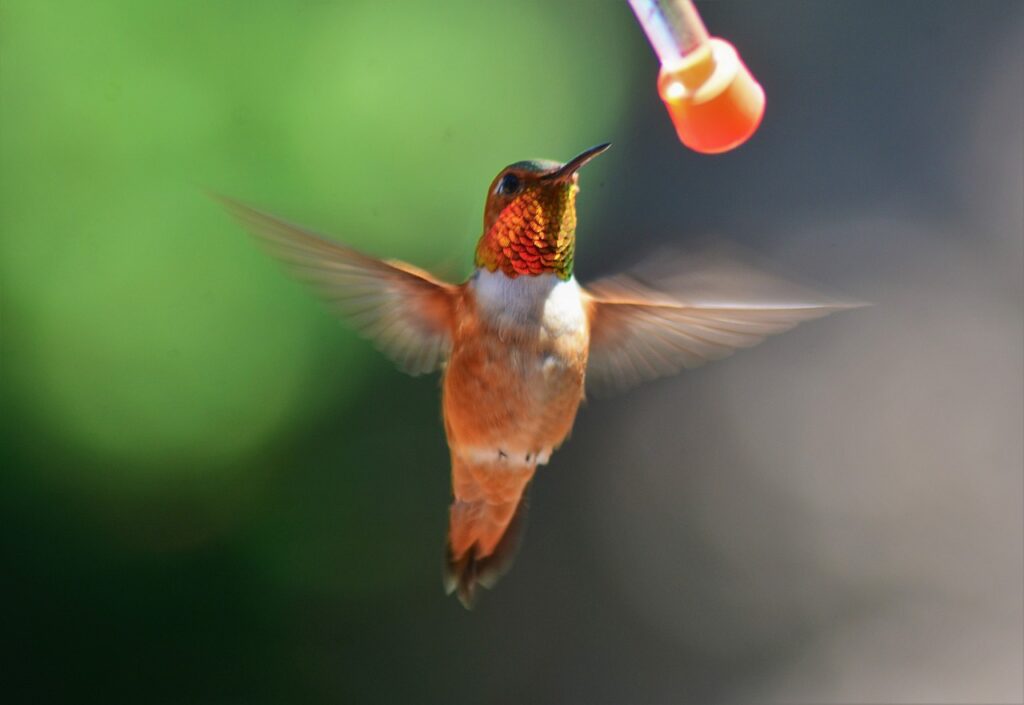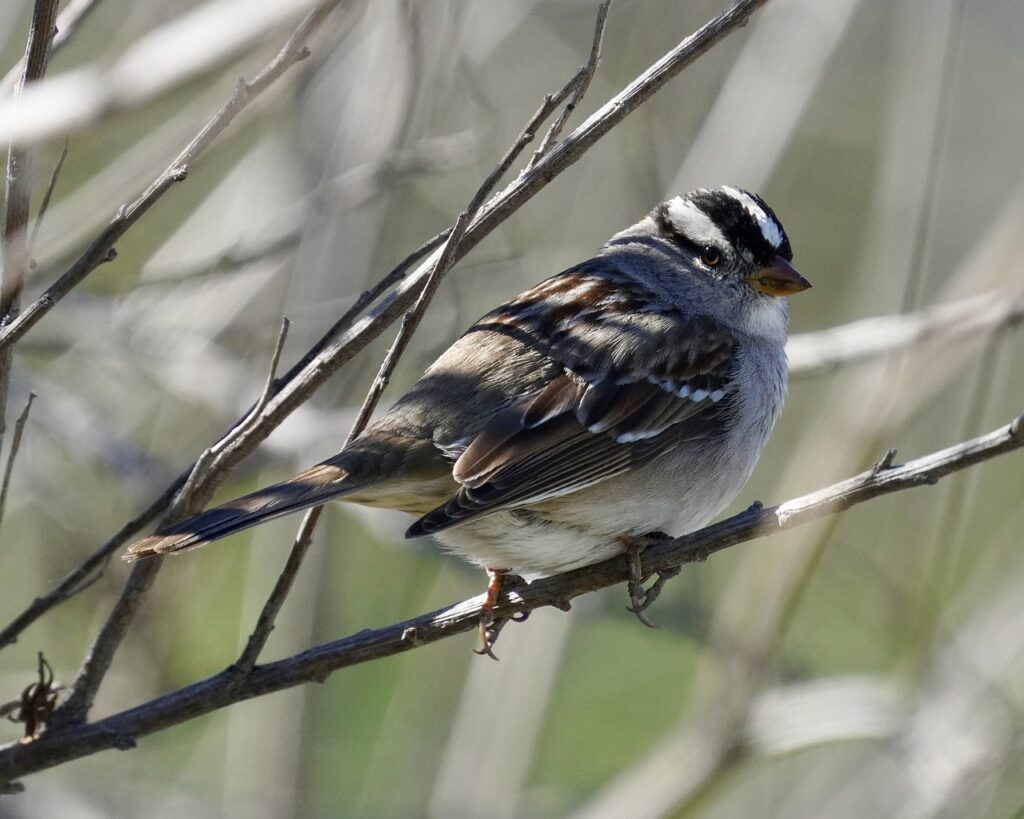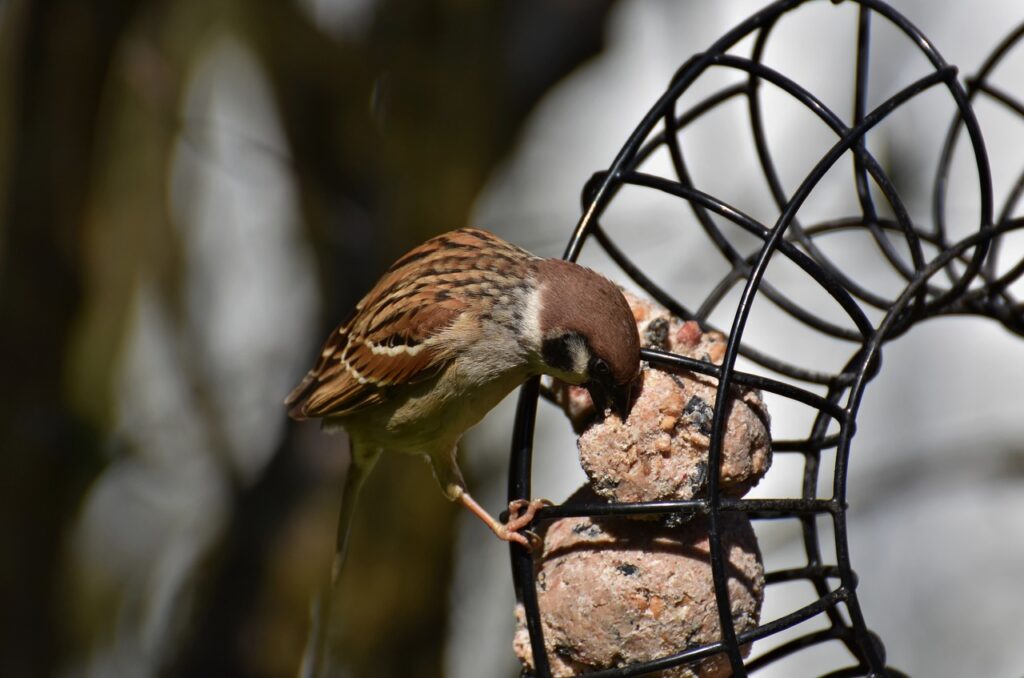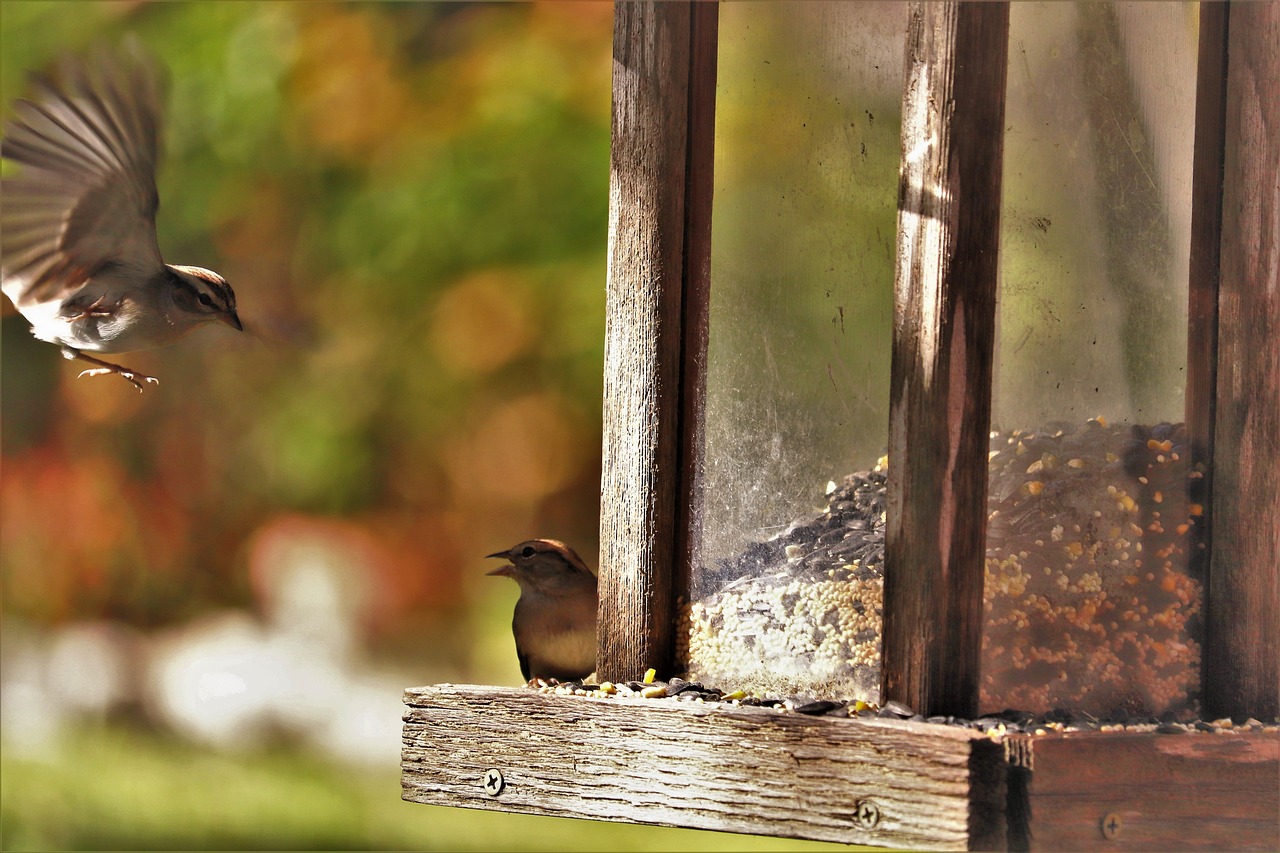Thinking about hanging a bird feeder or two in your backyard? Perfect timing! Fall is an excellent season to start backyard bird feeding—and here are five reasons why:
1. It Helps Resident Birds About to Migrate

There is a misconception that feeding birds in fall will stop them from migrating, when actually the opposite is true. Feeding resident birds can fortify them for their migration.
Resident migratory birds look for high-fat and energy-rich sources of food to build the fat reserves they’ll need to migrate. (Think premium seed blends with black-oil sunflower seeds, suet, and the like.) Big Bear Lake’s migrating birds, like the Rufous Hummingbird, are gearing up to go to the warmer regions of Mexico in winter. Hang a hummingbird feeder out now will help them along. Mourning Doves and Goldfinches are also ready to fly if they haven’t already, so your feeders will be a welcome pit stop.
2. It Helps Migrant Birds

While it may be true that fewer birds will visit feeders compared to spring and summer, those that do come need the help. Fall and winter are busy times for migrating birds, and those wild birds passing through or wintering in the region really need sustenance. And birds that will be wintering in the region, like the White-crowned Sparrow in Big Bear Valley, may arrive in late fall, looking for food. And there are always stragglers, so keep those fall feeders up for birds late to migrate in and out of your area.
3. It Shows Birds Where to Find Food in Winter

Birds are smart—they plan ahead. This can be seen in the way they make food provisions for winter ahead of time. In fact, they scout out prospective places to find food and shelter for the colder months. Hang bird feeders in the fall and the birds will notice—and take note. But if you wait too long and don’t start to feed them until winter, you’ll miss out on a lot of feathered visitors.
Birds looking to winter in your area are looking for food, water, and shelter. And if they find a well-placed bird feeder—not to mention a birdbath and native, bird-friendly plants and trees—they may just decide to stay a while.
Learn how to transform your yard into a Southern California bird sanctuary.
4. It Helps Breeding Birds and Their Young

Fall is also a busy time for breeding birds, who are looking for places to nest and raise their young. Much like any concerned parent, these bird parents are looking for a spot that is safe and near to food sources. If they find your bird feeder in fall, it may encourage them to stay. Breeding birds with access to food sources, including supplemental ones like bird feeders, have a better chance of having the energy and nutrients they need to lay healthy eggs and care for their young once they hatch.
5. It Gives You More Bird Variety at Your Feeders

Want to see more birds—and different kinds—at your feeders? Hang a bird feeder in the fall. Fall is one of those months where birds are coming and going, and they need places to rest and refuel during all this activity. Much like an airport, which captures travelers from all over in one area, your bird feeders can become a hub of activity with locals and far-flung visitors. But instead of people watching, you’ll be birdwatching all kinds of colorful species at your feeders that you may have never seen before!
Get Your Fall Feeders Ready

Want a quick and easy rundown on how to get started fall bird feeding? Here’s the basics:
- First: the bird feeder. The fact is, you can choose any type of feeder, or hang different types of feeders to attract different birds in fall. Tube feeders will bring smaller birds like jays, finches, and sparrows. Hummingbird feeders will fuel those fast hummers migrating long distances. And suet feeders are the perfect way to feed migrating birds a high-energy diet.
- Next: the bird food. The type of food you choose will depend on the birds you wish to attract (and the bird feeder you choose, if you’ve already chosen it). As a rule, though high-quality bird seed mixes with black-oil sunflower seeds and peanuts, suet, are all excellent fall fare.
- And…if you already have feeders. This is a great time to get them all cleaned up before starting a new season of bird feeding! Don’t know how to clean your feeders? Read our blog post “Cleaning Your Bird Feeder Dos and Don’ts.” And once you have your fall feeders clean and full, keep them filled consistently, if you want to keep birds coming back.
Get Bird Seed Delivered When You Want It

We are excited to announce that Chirp now offers a seed subscription! Get a 5-lb bag of our Big Bear Blend every week, two weeks, or month. Or, if you don’t want to commit, you can order it as needed. Think of it: bird seed delivered right to your door, so all you have to do is fill your feeders and watch the birds fly in.
Don’t miss a thing: Sign up for our monthly newsletters to get the scoop on sales, Chirp events, and more.
Visit us: Come fly by the Chirp store in Big Bear Lake to shop and say hi.
Socialize with us: Follow us on YouTube, Facebook, X(Twitter), Instagram, and Pinterest.


